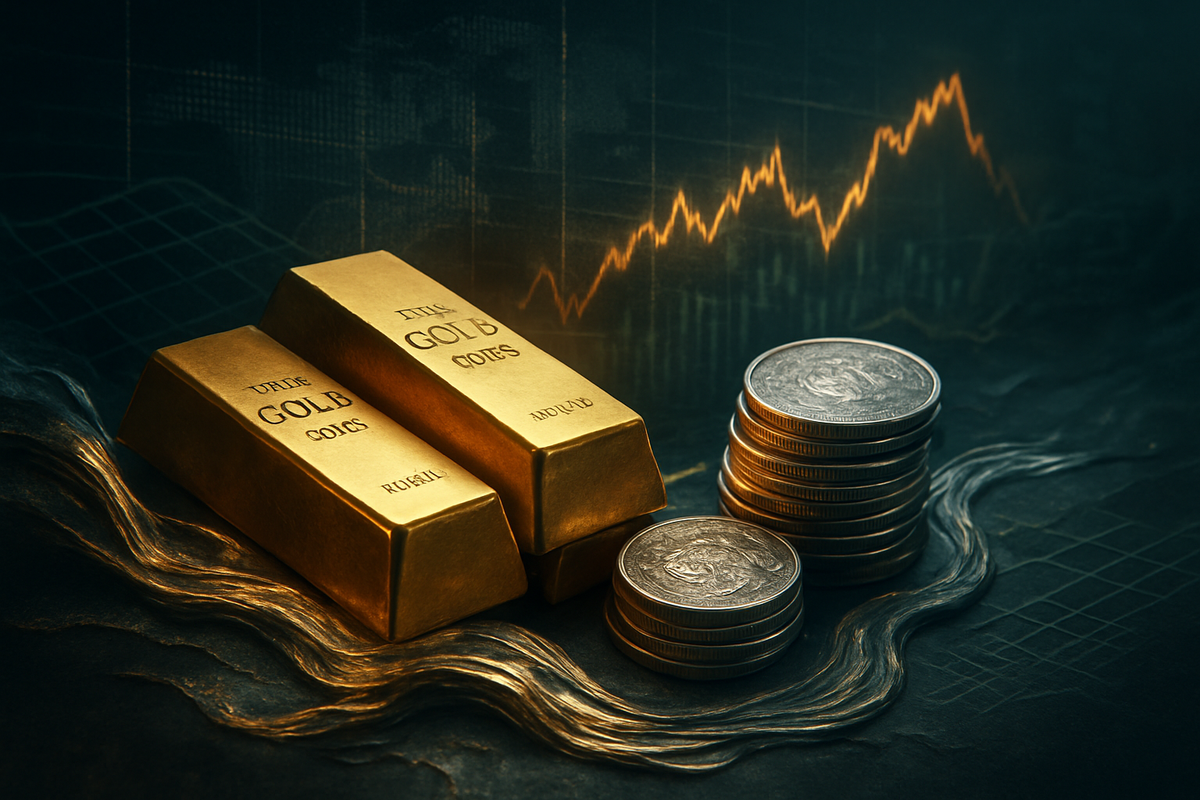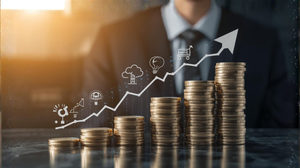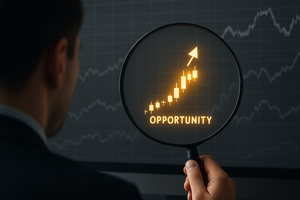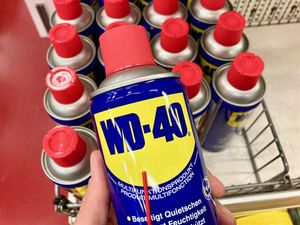
The precious metals market is currently experiencing a significant recalibration, as investors move to lock in substantial profits from gold and silver's recent, historic rallies. After a meteoric ascent throughout 2024 and 2025 that saw both metals shatter previous price ceilings—gold nearing $4,400 per ounce and silver surpassing $54 per ounce—the market has entered a phase of sharp correction and heightened volatility. This shift is largely driven by concerns over the sustainability of the rapid gains and widespread apprehension that the metals had become significantly overvalued, prompting a wave of profit-taking that has sent prices tumbling from their October 2025 peaks.
This recent downturn, marked by gold's biggest daily drop since 2013 and silver's steepest single-day fall since February 2021, underscores a complex interplay of factors influencing investor sentiment. While the long-term bullish narrative for precious metals remains largely intact, fueled by persistent geopolitical uncertainties, inflation hedges, and robust industrial demand for silver, the immediate focus has squarely shifted to market corrections and the strategic repositioning of capital. Investors are now navigating a landscape where the allure of safe-haven assets is tempered by the reality of rapid price adjustments and the search for sustainable value in a volatile global economy.
Market's Wild Ride: From Record Highs to Sharp Corrections
The recent dramatic movements in the precious metals market culminated in unprecedented highs before a swift and significant correction. Gold, a traditional safe-haven asset, surged to an all-time nominal high of approximately $4,398.00 per ounce on October 20, 2025. Silver, often dubbed "poor man's gold," mirrored this astonishing ascent, rocketing nearly 80% higher in 2025 to shatter its long-standing $50 per ounce ceiling and reach an all-time high of $54.3775 per ounce in mid-October 2025. This remarkable rally was largely driven by a confluence of global anxieties, including escalating geopolitical tensions in Eastern Europe and the Middle East, persistent inflation concerns, and widespread expectations of aggressive monetary easing by the US Federal Reserve. Furthermore, robust demand from key Asian markets like China and India, coupled with burgeoning industrial demand for silver from the burgeoning green energy sector, provided a strong tailwind.
However, the latter half of October 2025 saw a dramatic reversal, as the market entered a sharp correction phase fueled by intense profit-taking. On October 17, 2025, silver experienced an over 6% single-session drop, while gold fell 3.0%. This decline intensified rapidly, with gold futures slipping 0.24% to $4,349.24 per ounce and silver futures dropping 1.72% to $50.50 per ounce by October 21, 2025. The most significant move occurred on October 21, 2025, when spot gold plunged as much as 6.3% to $4,082.03 per ounce, marking its biggest daily drop since 2013. Silver also saw a precipitous fall, dropping 7.43% to $48.44 USD/t.oz on the same day, its steepest single-day decline since February 2021.
Key players in this volatile environment include individual traders and large institutional funds who capitalized on the rapid price appreciation. The swiftness of the rally had led many to build substantial long positions, making them susceptible to profit-taking as technical indicators signaled an "extremely overbought" market. Analysts, including those from Heraeus, had warned that such rapid gains were "historically not sustainable" and that demand could not withstand such price pressure indefinitely. The initial market reaction to these corrections has been one of heightened volatility and a noticeable shaking of investor confidence, although many market observers view these adjustments as a "healthy market correction" necessary to cool an overheated rally. The improved risk appetite due to easing US-China trade tensions and the conclusion of India's seasonal gold-buying spree also contributed to the softening demand that facilitated this profit-taking spree.
Companies Navigating the Volatile Currents
The sharp reversal in gold and silver prices has sent ripple effects across the entire precious metals ecosystem, creating clear winners and losers among public companies and investment vehicles. Traditional mining companies, whose revenues are directly tied to the per-ounce price of the metals they extract, are feeling the immediate pinch. Major gold producers like Barrick Gold (NYSE: GOLD) and Newmont (NYSE: NEM), along with silver miners such as Pan American Silver (NASDAQ: PAAS) and Hecla Mining (NYSE: HL), saw their stock prices decline significantly, with some experiencing drops of 4-8% on October 21, 2025, reflecting the operational gearing inherent in their business model. Their profitability margins are expected to contract as selling prices fall while input costs for labor, equipment, and energy remain stable or even rise. This pressure is particularly acute for higher-cost producers, who may find previously viable development projects becoming uneconomical, leading to potential delays or cancellations.
In contrast, royalty and streaming companies, exemplified by Wheaton Precious Metals (NYSE: WPM), typically exhibit greater resilience during market corrections. These firms acquire a percentage of future production or revenue from mining projects in exchange for upfront payments, insulating them from direct operational risks, cost inflation, and capital expenditure demands. While a decline in metal prices still affects their cash flows and asset valuations, their business model generally provides more predictable revenue streams and often commands premium valuations compared to traditional miners. For every $100 increase in gold's price, a streaming company's earnings often rise by $20-$30, demonstrating their leverage to the upside, but also their relative stability on the downside compared to direct miners.
Investment vehicles, particularly precious metal-backed Exchange Traded Funds (ETFs) like SPDR Gold Shares (NYSE: GLD) and iShares Silver Trust (NYSE: SLV), have also been impacted. The recent profit-taking has led to significant outflows and a reduction in Assets Under Management (AUM) as investors liquidate positions. For instance, several silver ETFs in India experienced declines of 6-7% on October 20, 2025. This volatility highlights a concerning divergence where strong gains in the underlying metals do not always translate proportionally into mining stock performance, suggesting a cautious institutional investor sentiment focused on operational leverage and total return potential. This often precedes broader corrections in the precious metals complex.
Firms involved in refining and trading precious metals are facing a mixed bag of challenges and opportunities. Refiners, like MMTC-PAMP in India, experienced unprecedented demand for physical metal during the rally, leading to shortages and logistical challenges—MMTC-PAMP reportedly ran out of silver stock in October 2025. While their profitability is often more tied to processing volume than absolute price, extreme volatility can complicate inventory management and contract fulfillment. Traders, on the other hand, have seen increased trading volumes and potential commission revenues during this period of high activity. However, they also face heightened risks, including increased margin calls and potential client defaults, with some large banks even stepping back from quoting prices due to thin liquidity and difficulty sourcing physical metal during the market's most volatile swings.
Wider Significance: A Reflection of Global Dynamics
The recent profit-taking and subsequent price corrections in gold and silver extend beyond mere market fluctuations, signaling deeper shifts within the global financial landscape. This event fits into broader industry trends characterized by a complex interplay of economic uncertainty, evolving inflation expectations, and changing safe-haven dynamics. While the initial rally was fueled by persistent geopolitical tensions, particularly in Eastern Europe and the Middle East, and robust demand from central banks diversifying their reserves, the perception of easing global tensions, including planned talks between the U.S. and China, has reduced the immediate urgency of safe-haven buying.
Furthermore, the strengthening U.S. dollar, with the Dollar Index (DXY) rising to around 98.91 by October 21, 2025, has made dollar-denominated commodities more expensive for international buyers, adding to the selling pressure. While inflation has been a significant driver for precious metals, a moderation in the U.S. Consumer Price Index (CPI) to 2.4% year-over-year in September 2025 suggests a potential normalization of inflation expectations. However, the underlying economic uncertainties, including the increasing possibility of a global recession, continue to underpin long-term safe-haven demand, ensuring gold's enduring appeal as a hedge against systemic risk. Silver, in particular, benefits from robust and growing industrial demand from the green energy transition, with its critical role in solar panels, electric vehicles, and 5G infrastructure creating a structural supply deficit projected at 118 million ounces in 2025, suggesting a long-term bullish trajectory driven by industrial use.
The ripple effects of this precious metals correction can be felt across other commodity and currency markets. While direct contagion to all commodities is not explicitly confirmed, the risk of gold's sell-off "infecting" other asset classes has been noted. Industrial metals like platinum and palladium, which have also seen significant gains in 2025, are susceptible to similar profit-taking pressures, though their demand is bolstered by the rebound in global auto production and the transition to cleaner transport technologies. In currency markets, the inverse relationship with the U.S. dollar remains paramount; a stronger dollar generally exerts downward pressure on gold and silver, while expectations of a weaker dollar in the long term could boost demand from international buyers. Central banks' ongoing de-dollarization efforts and diversification into gold also reinforce gold's role as a hedge against currency volatility.
Central bank policies, especially those of the U.S. Federal Reserve, are critical determinants for precious metals. The expectation of falling interest rates throughout 2025 has been a primary catalyst for the rally, making non-yielding assets more attractive. The Fed began cutting rates in September 2025 and is anticipated to continue this easing cycle, with a further quarter-point reduction expected in late October 2025, setting the federal funds rate between 3.75% and 4%. This looser monetary policy is considered inherently inflationary, traditionally benefiting precious metals. However, any deviation from this dovish path, such as fewer rate cuts than anticipated, could create significant headwinds for gold and silver by increasing the opportunity cost of holding non-yielding assets. Historically, such sharp pullbacks are often viewed as "healthy corrections" that prevent markets from becoming excessively overbought, creating potential buying opportunities for long-term investors, similar to corrections observed after the 2008 financial crisis or periods of high inflation in the 1970s. Silver, due to its dual role and lower liquidity, typically exhibits higher volatility than gold, experiencing steeper corrections but also more pronounced rallies.
What Comes Next: Navigating Volatility and Long-Term Trends
Following the recent profit-taking and corrections, the precious metals market is poised for a period of continued evolution, presenting both short-term challenges and long-term opportunities. In the immediate future, spanning late 2025 into early 2026, heightened volatility is expected to persist. Gold and silver prices will likely experience ongoing corrections and rallies as market participants digest new economic data, react to geopolitical developments, and interpret signals from central banks. A stronger U.S. dollar, further easing of geopolitical tensions, or a renewed appetite for risk in broader markets could exert additional downward pressure on prices. However, many investors view these dips as strategic buying opportunities, anticipating a rebound given the underlying bullish sentiment. Silver's inherent volatility, stemming from its dual role as a precious and industrial metal, suggests its short-term movements could be even more pronounced.
Looking further ahead, into 2026 and beyond, the long-term outlook for both gold and silver remains largely bullish, underpinned by several powerful structural factors. Persistent global inflation and economic uncertainty are expected to continue driving demand for precious metals as hedges against currency devaluation and systemic risk. Central banks globally are projected to maintain their significant net purchases of gold as part of ongoing de-dollarization efforts and reserve diversification, providing robust institutional support. Geopolitical instability, whether in the form of regional conflicts or trade disputes, will also continue to steer investors towards safe-haven assets. Crucially, silver's burgeoning industrial demand from green technologies—including solar panels, electric vehicles, and 5G infrastructure—is set to be a major catalyst, with projected supply deficits creating sustained upward pressure on prices. Analysts forecast gold potentially reaching $5,000-$10,000 per ounce by 2030 and silver exceeding $100 per ounce by 2035, though these are illustrative and subject to market dynamics.
For investors, strategic pivots will be essential. Experts suggest allocating 5-10% of a portfolio to precious metals for diversification and hedging purposes. Given the expected volatility, employing dollar-cost averaging or staged buying on meaningful dips (5-10% from highs) rather than chasing rallies is a prudent approach. Consideration of physical holdings versus paper assets, robust risk management with strict stop-losses, and maintaining a disciplined long-term perspective are paramount. Continuous monitoring of central bank actions, geopolitical shifts, inflation data, and U.S. dollar strength will be critical. Companies, particularly in the mining and refining sectors, will need to prioritize operational efficiency, cost control, and supply chain resilience. Adapting to evolving ESG (Environmental, Social, and Governance) considerations and technological innovations, such as "thrifting" in silver's industrial applications, will also be key to navigating future market conditions.
Emerging market opportunities are notable, especially in green technologies for silver and the ongoing de-dollarization trend driving central bank gold demand. The Asia-Pacific region's increasing consumption and investment in precious metals also presents a significant growth avenue. However, challenges include the inherent volatility and drawdown risk, silver's supply inelasticity, and the logistical complexities of physical metal storage. Potential scenarios range from a continued bull market, driven by persistent inflation and geopolitical instability, to a period of correction and consolidation if tensions ease and central banks adopt more hawkish stances. A choppy market within a higher trading range is also a plausible outcome, requiring agile investment strategies. While a significant downturn is currently considered a low probability, it underscores the need for continuous vigilance and adaptive strategies in this dynamic market.
Comprehensive Wrap-up: Navigating the Precious Metals Landscape
The recent profit-taking and subsequent price corrections in gold and silver mark a pivotal moment in the precious metals market, underscoring both the immense potential and inherent volatility of these assets. The key takeaway is that while the rapid ascent to historic highs in mid-October 2025 was unsustainable in the short term, leading to a necessary "healthy correction," the underlying structural drivers for a long-term bullish outlook remain largely intact. Investors have demonstrated a willingness to lock in profits, but the fundamental demand for safe-haven assets amidst global economic uncertainty, persistent (albeit moderating) inflation concerns, and ongoing geopolitical tensions continues to provide a strong foundation for both gold and silver.
Moving forward, the precious metals market is expected to remain dynamic and volatile. Gold's role as a hedge against systemic risk and currency devaluation, bolstered by consistent central bank accumulation and de-dollarization efforts, will continue to define its trajectory. Silver, with its dual identity as both a monetary metal and a critical industrial commodity, is particularly well-positioned due to the burgeoning demand from the green energy sector, which is projected to outstrip supply for years to come. The market is likely to experience periods of consolidation and further corrections, which many analysts view as opportune entry points for long-term investors.
The significance of these shifting trends lies in their reflection of broader global anxieties and the strategic re-evaluation of asset allocations. The current environment highlights the importance of diversification and a disciplined, long-term approach to precious metals investing. While short-term trading can be lucrative, it carries substantial risk, especially with silver's pronounced volatility. The market's erratic behavior is a clear signal of deeper anxieties within the global financial system, suggesting a period where capital flows will be highly responsive to macroeconomic shifts and geopolitical events.
Investors should closely watch several key indicators in the coming months. These include further communications and policy decisions from major central banks, particularly the U.S. Federal Reserve, regarding interest rates and monetary easing. Geopolitical developments, especially those impacting global stability and trade relations, will also be crucial. Furthermore, monitoring inflation data, the strength of the U.S. dollar, and reports on industrial demand for silver will provide valuable insights into the market's direction. Ultimately, while the path may be volatile, the long-term narrative for precious metals appears to be one of sustained relevance and potential growth, making strategic positioning vital for those looking to navigate these complex financial currents.
This content is intended for informational purposes only and is not financial advice







